Home>Renovation & DIY>Tools & Equipment>What Paint Brushes Did Bob Ross Use
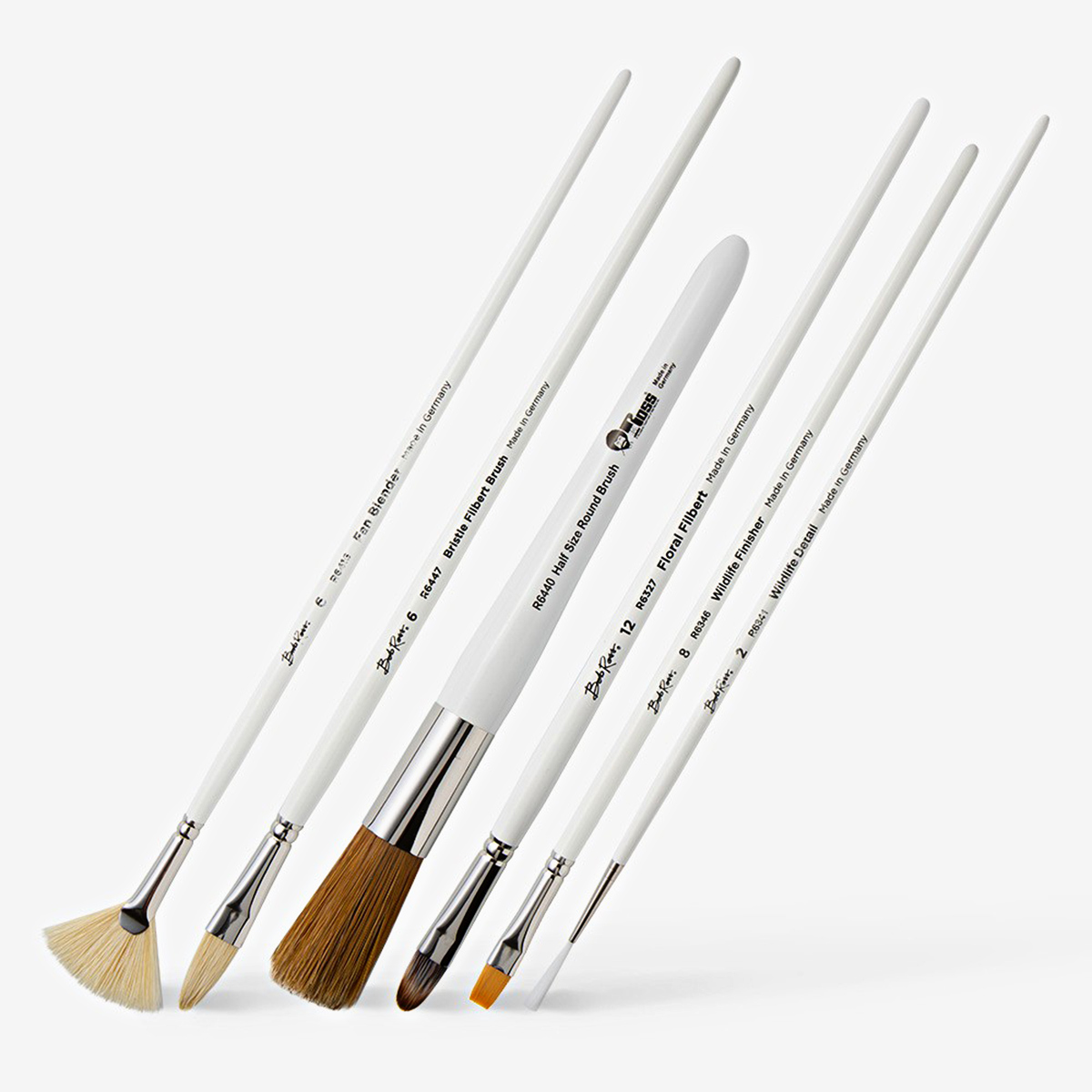

Tools & Equipment
What Paint Brushes Did Bob Ross Use
Modified: February 26, 2024
Discover the essential tools and equipment used by Bob Ross, including his favorite paint brushes. Learn how to achieve stunning landscapes with these top-rated tools and unleash your inner artist.
(Many of the links in this article redirect to a specific reviewed product. Your purchase of these products through affiliate links helps to generate commission for Storables.com, at no extra cost. Learn more)
Introduction
When it comes to creating stunning works of art, the choice of tools and equipment is of utmost importance. And in the world of painting, one tool that holds significant value is the paint brush. A paint brush is not just a simple tool; it is an extension of an artist’s creativity and vision. The right paint brush can make all the difference in achieving the desired strokes, textures, and details on the canvas.
In the art community, one name that stands out is Bob Ross. Bob Ross was an iconic painter and the host of the popular television show “The Joy of Painting.” His soothing voice, gentle demeanor, and incredible artistic skills captured the hearts of millions of viewers around the world. Bob Ross’s ability to effortlessly paint breathtaking landscapes sparked a newfound interest in art for many, and his signature brush technique played a vital role in achieving his distinct style.
In this article, we will delve into the world of paint brushes and explore the types of brushes used by Bob Ross. We will discover the importance of selecting the right brush for different painting techniques and dive into the intricacies of brush maintenance. So, if you’re an aspiring artist or simply an art enthusiast curious about the tools behind the masterpieces, read on to unravel the magic of paint brushes.
Key Takeaways:
- Bob Ross favored natural bristle brushes, fan brushes, palette knives, and soft blender brushes to achieve his iconic landscapes. His confident brush technique and seamless blending created stunning, textured masterpieces.
- Proper maintenance and cleaning of paint brushes are crucial for preserving their longevity and ensuring consistent, high-quality results in artwork. By understanding brush types and techniques, artists can enhance their creative journey.
Read more: What Are Silicone Paint Brushes Used For
Bob Ross: The Painter
Bob Ross was a legendary painter known for his unique and soothing approach to landscape painting. Born in 1942 in Florida, Ross discovered his passion for art at an early age. He joined the Air Force, where he first encountered painting and developed his signature technique.
Ross believed that everyone had the ability to paint and wanted to share his knowledge and passion with the world. In 1983, he started hosting “The Joy of Painting,” a television show that quickly gained popularity. With his calm demeanor and encouraging words, Ross guided viewers through the process of creating their own beautiful landscapes.
One of the distinguishing features of Ross’s paintings was the soft, flowing brush strokes that brought his landscapes to life. His ability to create stunningly realistic scenes using simple tools and techniques captivated audiences and made him an iconic figure in the art world.
Ross believed that the right paint brush was essential in achieving his desired results. He understood that different brushes had different qualities and could be used to create various effects on the canvas. Whether he was painting delicate clouds, serene mountains, or vibrant foliage, Ross always had the perfect brush in hand.
Throughout his career, Ross became known for his ability to create beautiful landscapes in a short amount of time. This was largely due to his brush technique, which allowed him to work quickly and efficiently. His easy-flowing brushwork enabled him to create depth and texture, giving his paintings a sense of realism and harmony.
Today, Bob Ross’s legacy lives on through his televised episodes, instructional books, and art supplies. Artists and enthusiasts still look to Ross for inspiration and guidance, finding solace and joy in his teachings.
In the next section, we will explore the significance of paint brushes in the art world and how they can dramatically impact the outcome of a painting.
Importance of Paint Brushes in Art
Paint brushes are the tools that allow artists to bring their creative visions to life. They serve as the bridge between the artist’s imagination and the canvas, allowing for the precise application of paint and the creation of various textures and effects. The choice of paint brush can greatly influence the outcome of a painting, making it an essential consideration for artists of all levels.
One of the primary functions of a paint brush is to control the flow of paint. Different types of brushes have different bristle compositions, shapes, and sizes, all of which can impact the amount of paint they hold and release. A brush with stiffer bristles, for example, will hold more paint and create bold, defined strokes, while a softer brush will give a more delicate and subtle effect.
Paint brushes also allow artists to create different textures and patterns. The way the bristles are shaped and arranged can determine the type of marks and strokes that can be achieved. For example, a flat brush can create straight lines and sharp edges, while a round brush is ideal for blending and creating soft, circular shapes. By mastering different brush techniques, artists can achieve a wide range of effects, from smooth gradients to textured impasto.
Another crucial aspect of paint brushes is their durability and longevity. High-quality brushes made with quality materials, such as natural bristles or synthetic fibers, can last significantly longer than cheaper alternatives. They maintain their shape and performance over time, allowing artists to continue using their favorite brushes for years without compromising the quality of their work.
Furthermore, paint brushes contribute to an artist’s individual style and mark-making. Each artist develops a unique brush technique and handling, creating a distinct look and feel to their artwork. The brush strokes can convey emotions, energy, and a personal touch, making them an integral part of the artistic expression.
Overall, paint brushes play a vital role in the world of art. They enable artists to achieve the desired effects, textures, and details in their artwork. Choosing the right brush for a specific technique or style is essential for artists to fully realize their creative vision. In the next section, we will explore the different types of paint brushes commonly used in the art world.
Types of Paint Brushes
Paint brushes come in a wide variety of shapes, sizes, and bristle compositions, each designed for specific purposes in the artistic process. Understanding the different types of paint brushes can help artists make informed choices and achieve desired effects in their artwork. Here are some of the most commonly used paint brushes:
1. Round Brushes:
Round brushes have a pointed tip and a round ferrule, making them versatile for various painting techniques. They are typically used for detailed work, such as creating thin lines, fine details, and precise blending. The size of a round brush is indicated by a number, with smaller numbers representing smaller brush sizes.
Read more: What Are Different Paint Brushes Used For
2. Flat Brushes:
Flat brushes have a flat, rectangular shape and are commonly used for covering larger areas with broad, even strokes. They are ideal for creating sharp edges, bold lines, and smooth backgrounds. Flat brushes are available in various widths, allowing artists to choose the size that best suits their needs.
3. Filbert Brushes:
Filbert brushes have an oval-shaped, flat tip that is ideal for blending, softening edges, and creating smooth transitions. They combine the versatility of a flat brush with the gentle touch of a round brush, making them popular for portrait and landscape paintings.
4. Fan Brushes:
Fan brushes have a flat, spread-out bristle arrangement, resembling a fan. They are primarily used for creating texture, subtle blending, and softening edges. Fan brushes can be handy for painting grass, leaves, and other natural elements.
5. Angular Brushes:
Angular brushes have angled bristles, allowing artists to create precise lines, controlled strokes, and sharp corners. They are often used for painting intricate details, lettering, and calligraphy.
Read also: 12 Best Bob Ross Toaster For 2025
6. Mop Brushes:
Mop brushes have a large, rounded shape and soft, flexible bristles. They are used for wet washes, blending, and creating smooth, flowing effects. Mop brushes are commonly used in watercolor painting and for creating soft backgrounds in acrylic and oil paintings.
These are just a few examples of the many types of paint brushes available to artists. Experimenting with different brush types can open up new possibilities and help artists develop their unique style and technique. In the next section, we will explore the specific paint brushes that Bob Ross favored in his iconic landscape paintings.
Bob Ross’s Preferred Paint Brushes
Bob Ross was known for his distinct style of landscape painting, and his choice of paint brushes played a significant role in achieving his signature look. Ross had specific brushes that he preferred, which allowed him to create the smooth, delicate, and realistic effects that became synonymous with his work. Here are some of Bob Ross’s preferred paint brushes:
1. Natural Bristle Brushes:
Bob Ross favored natural bristle brushes, specifically those made from hog hair. Natural bristle brushes are known for their ability to hold and release paint smoothly, making them ideal for creating soft blends and subtle colors variations. The stiffness of the hog hair bristles allowed Ross to control the amount of paint being applied and achieve the desired texture on the canvas.
2. Fan Brushes:
Fan brushes were another staple in Bob Ross’s brush collection. He often used them to create textured effects and to paint various natural elements, such as trees, clouds, and foliage. The fan brush’s spread-out bristle arrangement allowed Ross to easily create the illusion of branches, leaves, and other organic shapes.
Read more: What Are Good Paint Brushes
3. Palette Knives:
In addition to traditional brushes, Bob Ross frequently used palette knives in his paintings. Palette knives are flat metal blades with a handle, and they provide a unique texture and expressive quality to the artwork. Ross used palette knives to apply thick layers of paint, to create the impasto technique, and to achieve the appearance of rocks, mountains, and other textured surfaces.
4. Soft Blender Brushes:
To achieve the smooth, ethereal look in his skies and background elements, Bob Ross relied on soft blender brushes. These brushes have long, soft bristles that gently blend colors together, creating seamless gradations and transitions. Soft blender brushes allowed Ross to achieve the dreamy and atmospheric effects that were a hallmark of his paintings.
While these were some of Bob Ross’s preferred paint brushes, he often emphasized that the choice of brush was less important than the technique and skill of the artist. He encouraged artists to experiment with different brushes and find the ones that suited their personal style and needs.
In the next section, we will dive into the brush techniques that Bob Ross employed to bring his landscapes to life.
Natural Bristle Brushes
Natural bristle brushes are a popular choice among artists, including the renowned painter Bob Ross. These brushes are made from the hairs of animals, primarily hog bristles. They offer unique qualities that make them well-suited for certain painting techniques and styles.
The natural bristles of these brushes have a coarse texture and are quite resilient. This makes them ideal for applying thick, heavy-bodied paints such as oil and acrylic. The stiffness of the bristles allows for better control over the paint, making it easier to manipulate and create different effects on the canvas.
One of the key advantages of natural bristle brushes is their ability to hold and release paint in a controlled manner. The bristles have tiny “flags” or splits at the ends that help to hold more paint, allowing for more substantial coverage with each stroke. This is particularly useful for artists who prefer to work with thicker layers of paint and want to achieve rich, textured effects in their artwork.
Because natural bristle brushes are stiff and resilient, they can effectively handle the pressure and intensity of brushwork. Artists can use these brushes to create expressive marks, bold strokes, and dynamic textures. The firmness of the bristles also provides a certain level of resistance, allowing for better manipulation of the paint and giving artists the ability to control the thickness and direction of their brushstrokes.
Natural bristle brushes are commonly used in traditional oil painting techniques, as they are well-suited for techniques such as impasto, where thick layers of paint are applied. The coarse texture of the bristles helps create visible texture and depth in the paint layers, enhancing the overall visual impact of the artwork.
It’s important to note that natural bristle brushes may not be the best choice for all painting mediums. They can absorb water and become overly flexible when used with water-based paints such as watercolors or gouache. In these cases, synthetic brushes with softer bristles are typically recommended.
To ensure the longevity of natural bristle brushes, proper care and maintenance are crucial. After each use, it is important to thoroughly clean the brushes, removing all traces of paint to prevent the bristles from becoming stiff and brittle. Additionally, storing the brushes properly – in a clean and dry place with the bristles facing up or suspended – will help maintain their shape and extend their lifespan.
Overall, natural bristle brushes offer artists the ability to achieve a range of effects and textures in their artwork. Whether it’s creating bold, expressive strokes or building up layers of paint, these brushes are a valuable tool for artists seeking to add dimension and depth to their work.
Synthetic Bristle Brushes
Synthetic bristle brushes have become increasingly popular among artists in recent years. These brushes are made from synthetic fibers, such as nylon or polyester, and offer several advantages over natural bristle brushes.
One of the main advantages of synthetic bristle brushes is their versatility across different painting mediums. Unlike natural bristle brushes, synthetic brushes do not absorb water, making them suitable for water-based paints like watercolors and acrylics. Their ability to maintain shape and stiffness even when wet allows for more controlled brushwork, precise details, and smooth application of paint.
Additionally, synthetic bristle brushes tend to be more durable and resistant to wear and tear. They are less prone to breaking or fraying, ensuring that the brushes maintain their shape and performance over time. This durability makes them an excellent choice for artists who work with heavy-bodied paints or apply vigorous brushstrokes in their artwork.
Another significant advantage of synthetic bristle brushes is their affordability. Compared to natural bristle brushes, synthetic brushes are generally less expensive, making them a budget-friendly option for artists, especially those who are just starting. Despite their lower cost, many synthetic brushes are designed to mimic the qualities of natural bristle brushes, providing artists with a cost-effective alternative without compromising on performance.
The synthetic fibers used in these brushes are often engineered to mimic the texture and stiffness of natural bristles. Manufacturers have developed techniques to create synthetic fibers that closely resemble the properties of hog bristles, providing similar resistance and spring while offering greater durability and ease of use.
Furthermore, synthetic bristle brushes are often preferred by artists who work with vegan or animal-conscious principles. As no animal hair is used in their production, synthetic brushes offer an ethical alternative without compromising on quality or performance.
Like natural bristle brushes, proper care and maintenance are essential for synthetic bristle brushes. Regular cleaning after each use and proper drying are vital to maintain the integrity and longevity of the brushes. Storing them in a clean and dry place will help prevent damage to the bristles and ensure they retain their shape and performance for years to come.
Overall, synthetic bristle brushes have become a reliable and versatile choice for artists working with various painting mediums. With their durability, affordability, and ability to mimic the qualities of natural bristle brushes, they provide artists with the tools to express their creativity and achieve beautiful results in their artwork.
Read more: What Are Chip Paint Brushes
Bob Ross’s Brush Technique
Bob Ross was not only a talented painter but also a master of brush technique. His unique approach to utilizing brushes allowed him to create stunning landscapes with ease and precision. Understanding Bob Ross’s brush technique can provide valuable insights into achieving his signature style and bringing your own artwork to life.
One of the key aspects of Bob Ross’s brush technique was his use of firm, controlled brushstrokes. Whether he was painting fluffy clouds, majestic mountains, or serene landscapes, Ross utilized deliberate and confident strokes to create the desired effect. He often used natural bristle brushes, such as hog hair brushes, for their stiffness and ability to hold and release paint effectively.
Ross’s technique involved loading his brush with paint using a side-to-side method, making sure to evenly distribute the paint along the bristles. This allowed him to have better control over the amount of paint being applied to the canvas. He would then use light, gentle pressure to create the initial strokes, gradually increasing the pressure to add depth and texture to the painting.
Another notable aspect of Bob Ross’s brush technique was his ability to blend colors seamlessly. He achieved smooth transitions and gradual color shifts by using the wet-on-wet technique. This involved applying wet paint onto a still-wet canvas, allowing the colors to mix and blend effortlessly. Ross would use gentle, sweeping motions with his brush, softly intermingling the colors to create subtle gradients and harmonious blends.
Textures played a significant role in Ross’s landscape paintings, and he employed various brush techniques to create them. For example, when painting trees or foliage, he would use the “tap-tap” method, lightly tapping the bristles against the canvas to create the appearance of leaves or branches. He would also use the edge of a palette knife to scrape or create texture, adding visual interest and dimension to his artwork.
Additionally, Ross was known for his ability to paint with speed and efficiency. His “wet-on-wet” technique allowed him to work quickly, as the paint remained wet and malleable on the canvas. This rapid style of painting was a hallmark of his television show, “The Joy of Painting,” where he completed an entire landscape painting in just half an hour. Ross’s brush technique, combined with his ability to work swiftly, resulted in vibrant and captivating artworks that seemed to come to life effortlessly.
While Bob Ross had his preferred brushes and techniques, he often emphasized that artists should experiment and find what works best for them. It is important to remember that the brush technique is just one element of creating art, and personal style and creativity play a significant role in developing one’s unique artistic voice.
By incorporating elements of Bob Ross’s brush technique, such as confident strokes, seamless blending, and the use of various brush techniques, artists can add depth, texture, and vibrancy to their own artwork. Practice, experimentation, and a willingness to embrace mistakes and happy accidents are all part of the journey towards developing a style that is truly your own.
Maintaining and Cleaning Paint Brushes
Maintaining and properly cleaning your paint brushes is essential for preserving their longevity and ensuring optimal performance. With the right care, your brushes can last for years and provide consistent results in your artwork. Here are some tips for maintaining and cleaning your paint brushes:
1. Clean brushes immediately after use:
It is crucial to clean your brushes as soon as you finish painting to prevent the paint from drying and hardening on the bristles. Leaving paint on the brush for an extended period can damage the bristles and make it difficult to remove the paint completely.
2. Rinse with water or appropriate solvent:
Start by rinsing your brushes with water or the appropriate solvent based on the type of paint you are using. For water-based paints like acrylics, rinsing with water is usually sufficient. For oil-based paints, mineral spirits or paint thinner may be required. Remember to follow the manufacturer’s instructions when using solvents.
Read more: What Are Paint Brushes Made Of
3. Use mild soap or brush cleaner:
For a more thorough cleaning, you can use mild soap or specialized brush cleaners. Gently massage the bristles with your fingers or use a brush cleaning pad, ensuring that the soap or cleaner reaches the base of the bristles. Rinse thoroughly with water until no traces of paint or soap remain.
4. Shape and reshape the bristles:
After cleaning, reshape the bristles of your brushes to their original shape. Use your fingers to shape the bristles gently or use a brush comb to remove any tangles or clumps. Ensuring that the bristles are straight and properly aligned will help maintain the integrity and performance of the brush.
5. Dry the brushes properly:
Allow the brushes to dry completely before storing them. Lay them flat or hang them upside down to prevent water from pooling in the ferrule, which can lead to damage and bristle splaying. Avoid drying your brushes near a heater or in direct sunlight, as this can also cause damage.
6. Store your brushes correctly:
Store your brushes in a clean and dry place to prevent dust, dirt, or humidity from affecting their quality. If possible, store them vertically or in a brush holder to maintain the shape of the bristles. Avoid storing brushes in a tightly closed container, as it can cause the bristles to bend or lose their shape.
Read more: What To Do With Paint Brushes Overnight
7. Handle your brushes with care:
Treat your brushes gently and avoid using excessive force when cleaning or shaping them. Rough handling can lead to bristle breakage or detachment from the ferrule. Proper care and gentle treatment will ensure that your brushes serve you well for a long time.
By following these maintenance and cleaning guidelines, you can extend the lifespan of your paint brushes and maintain their performance. Clean brushes will allow you to paint with precision, achieve consistent results, and fully unleash your artistic potential.
Conclusion
Paint brushes are essential tools for artists, enabling them to bring their creative visions to life on canvas. Whether you’re an aspiring artist or an art enthusiast, understanding the importance of paint brushes and their impact on the final artwork is crucial. Throughout this article, we have explored the world of paint brushes, delving into the techniques and preferences of legendary painter Bob Ross.
We’ve learned that the choice of paint brush can significantly influence the outcome of a painting. Natural bristle brushes, such as hog bristle brushes, offer stiffness and versatility, allowing artists to achieve rich textures, controlled brushwork, and expressive marks. Synthetic bristle brushes, on the other hand, provide durability, versatility across different painting mediums, and affordability, making them a great choice for artists exploring various techniques.
Bob Ross’s preferred paint brushes, including natural bristle brushes, fan brushes, palette knives, and soft blender brushes, were essential tools in his artistic repertoire. His brush techniques, characterized by confident strokes, seamless blending, and the creation of captivating textures, allowed him to create stunning landscapes that continue to inspire artists today.
Proper maintenance and cleaning of paint brushes are vital to ensure their longevity and optimal performance. Cleaning brushes immediately after use, rinsing with appropriate solvents or water, and reshaping the bristles are essential steps in maintaining the brushes’ integrity. By taking care of your brushes, you can enjoy consistent, high-quality results in your artwork.
In conclusion, paint brushes are more than just tools; they are extensions of an artist’s creativity and vision. By understanding the different types of paint brushes, exploring various techniques, and taking proper care of these brushes, you can enhance your artistic journey and continue to develop your unique style.
So, whether you’re creating landscapes, portraits, abstract art, or anything in between, remember that the paint brush in your hand holds the power to transform your imagination into stunning works of art.
Frequently Asked Questions about What Paint Brushes Did Bob Ross Use
Was this page helpful?
At Storables.com, we guarantee accurate and reliable information. Our content, validated by Expert Board Contributors, is crafted following stringent Editorial Policies. We're committed to providing you with well-researched, expert-backed insights for all your informational needs.
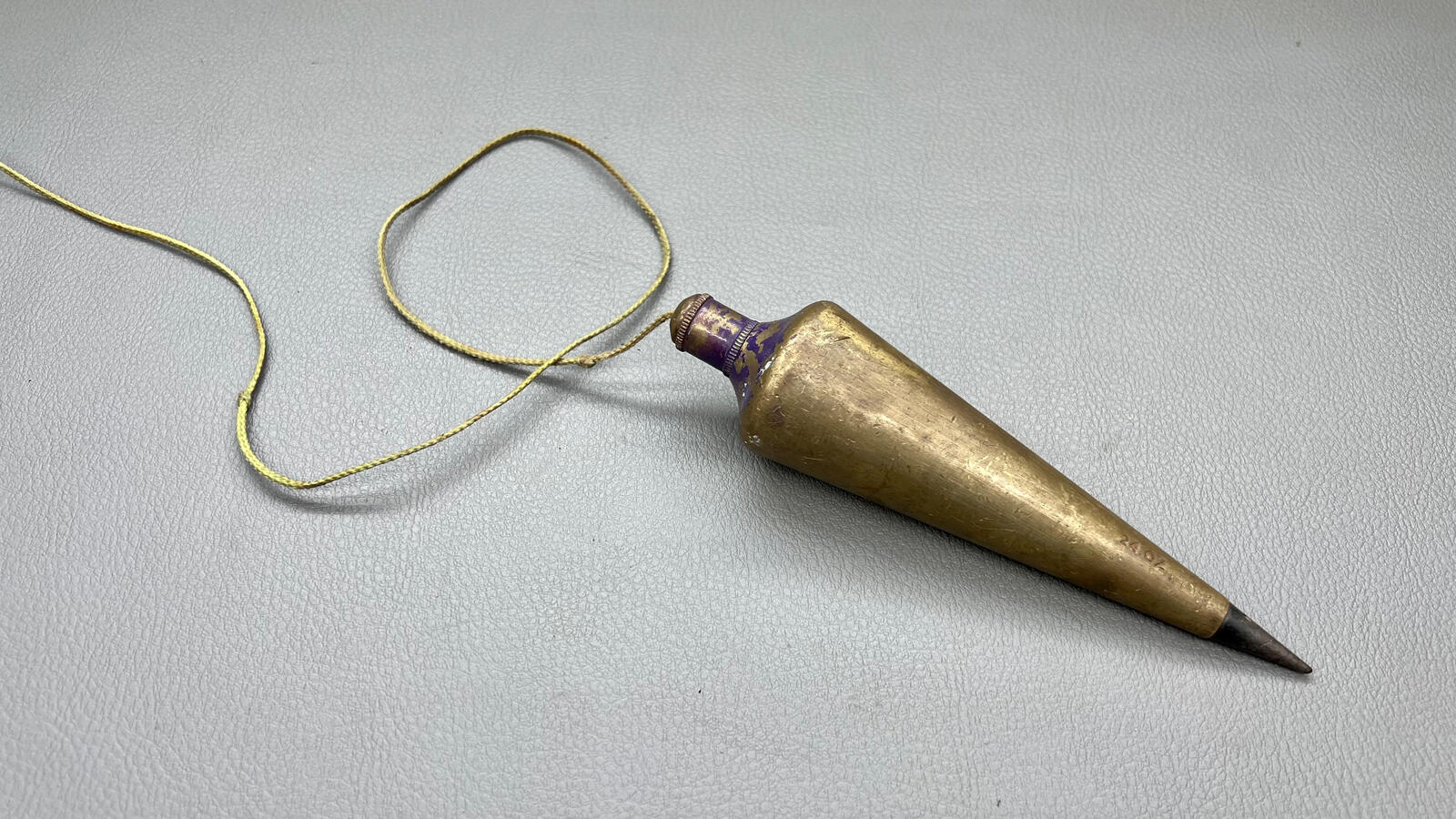
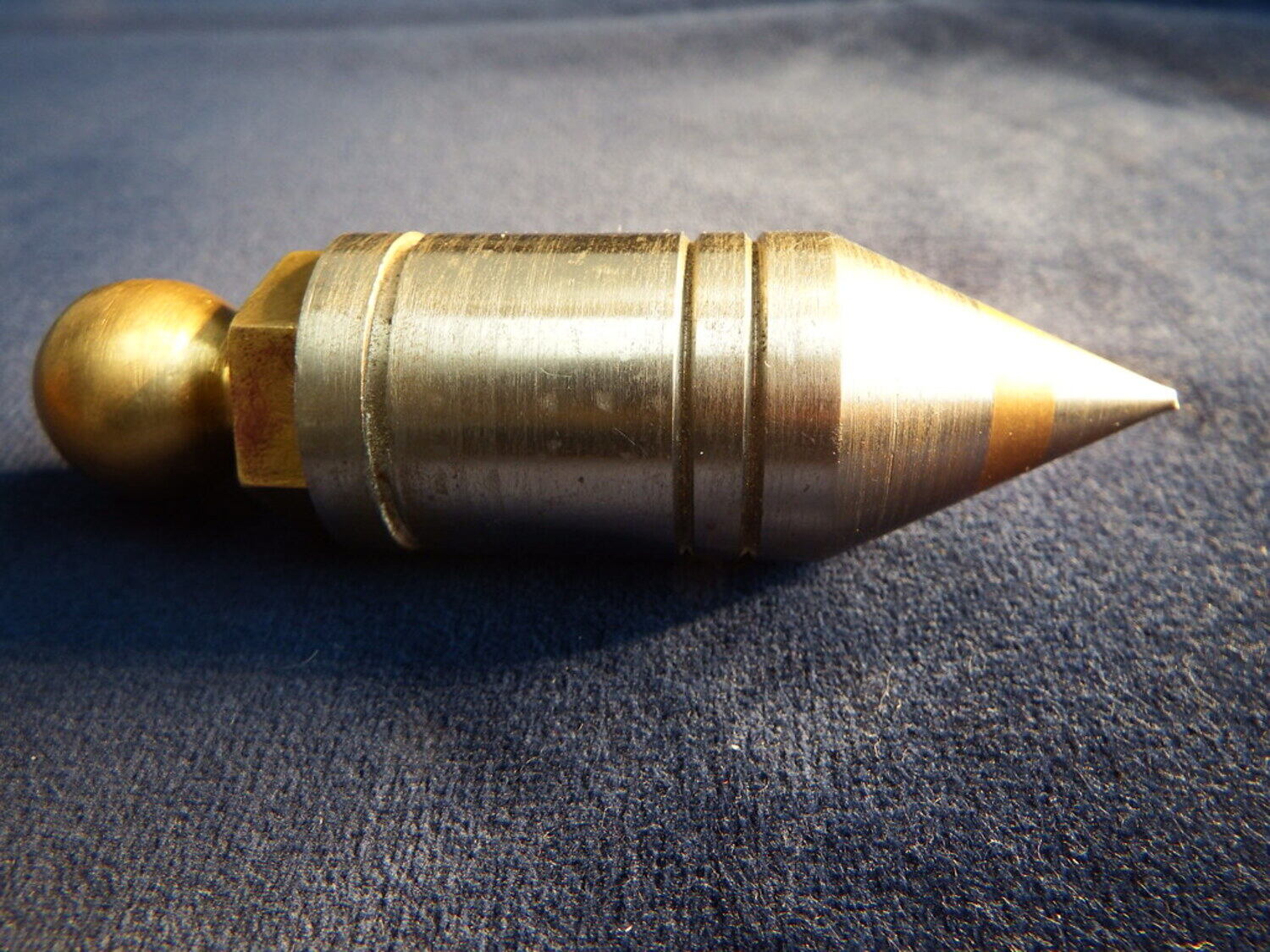
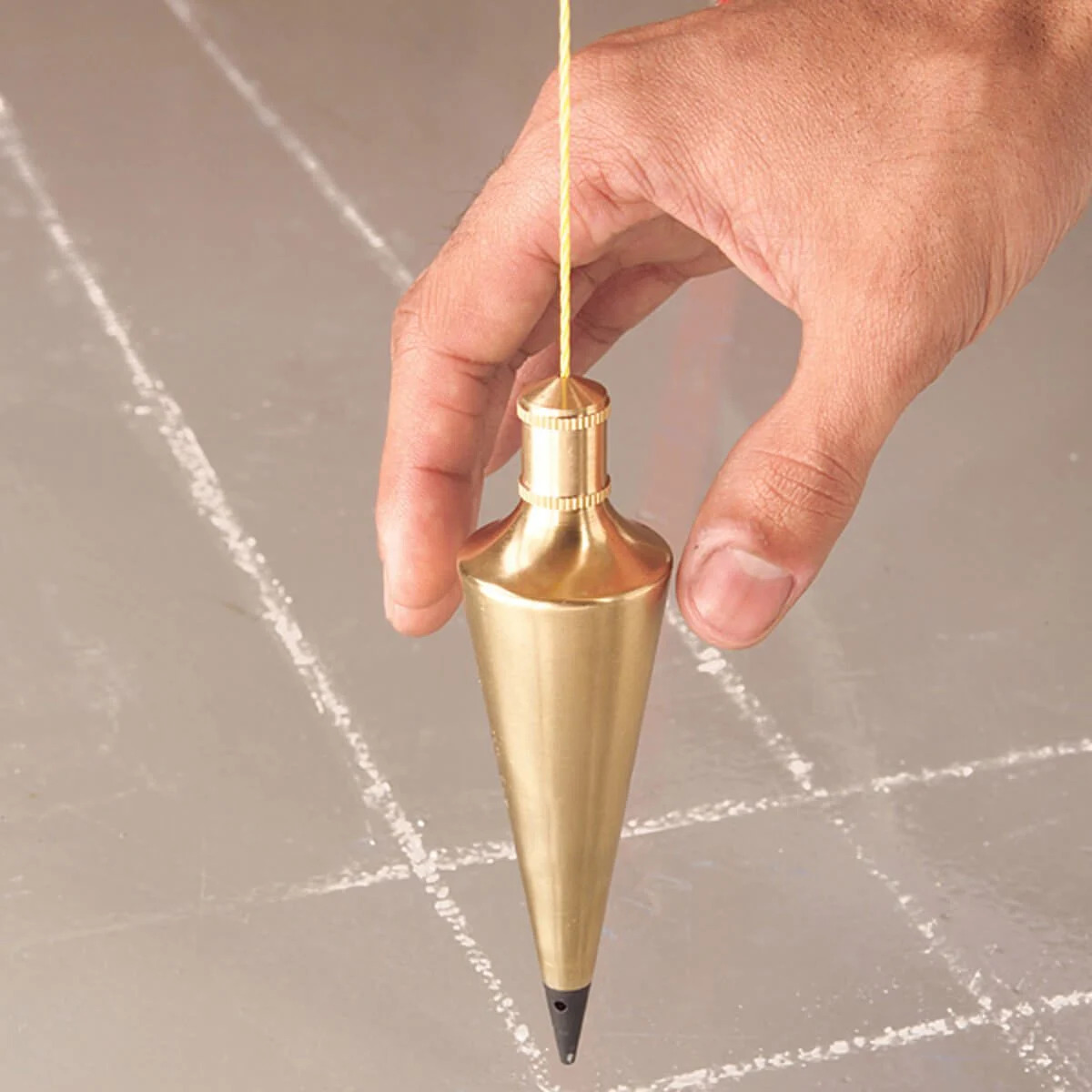
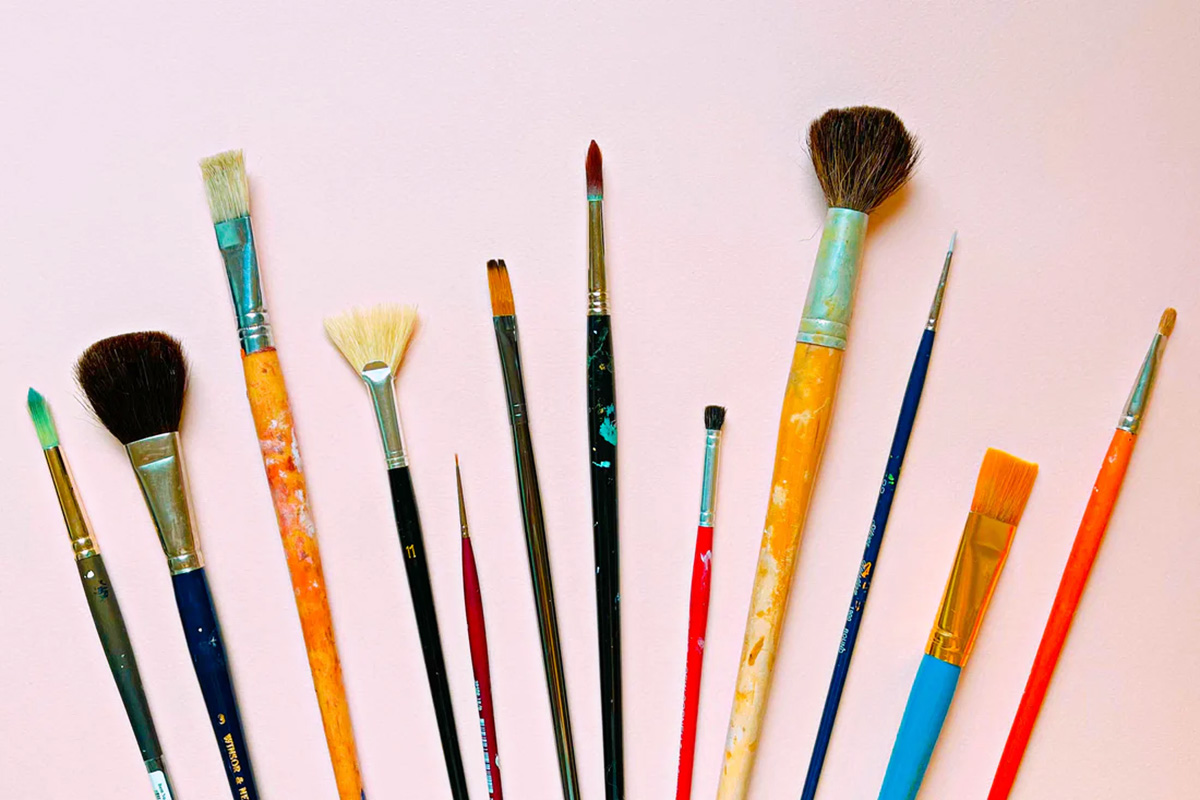
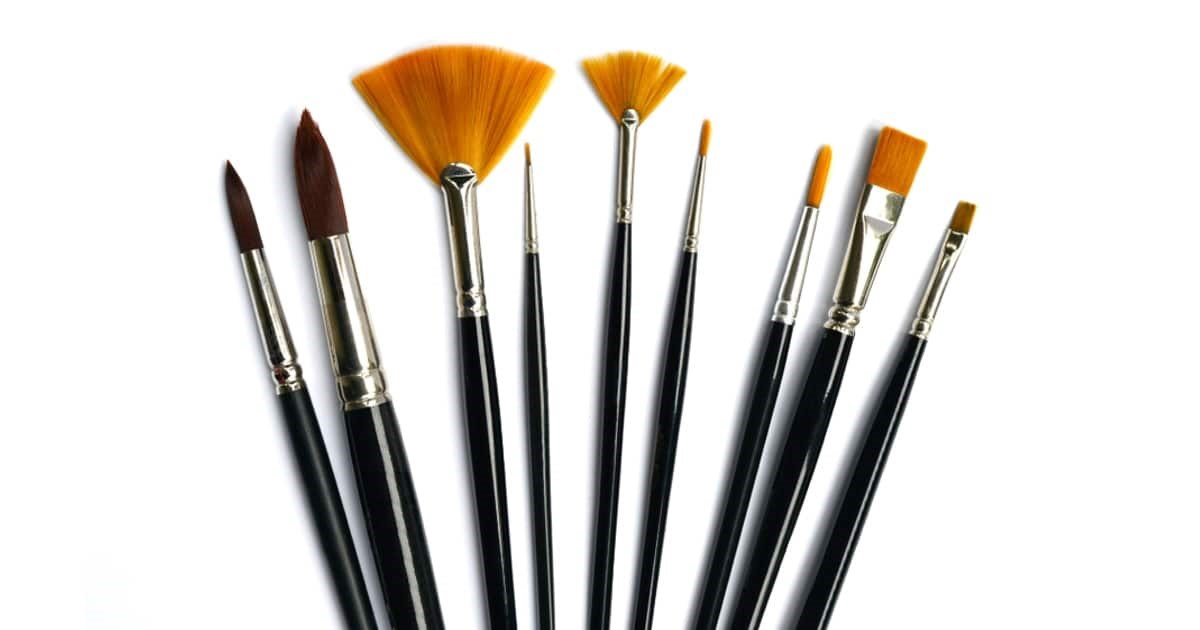
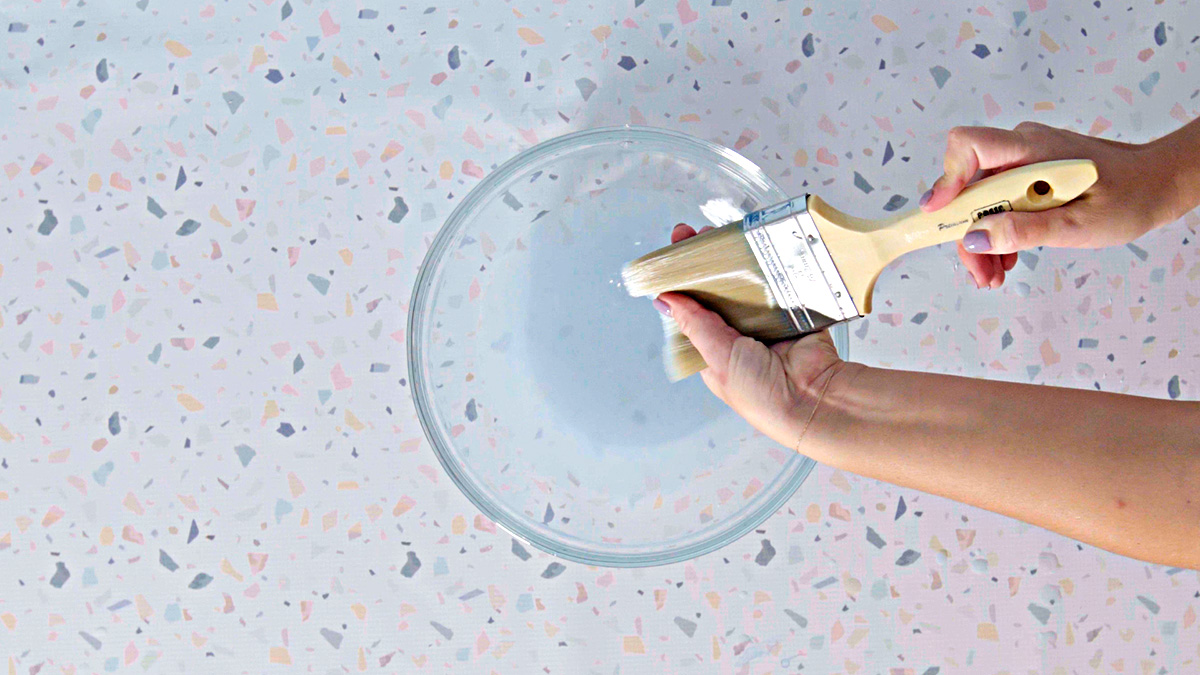
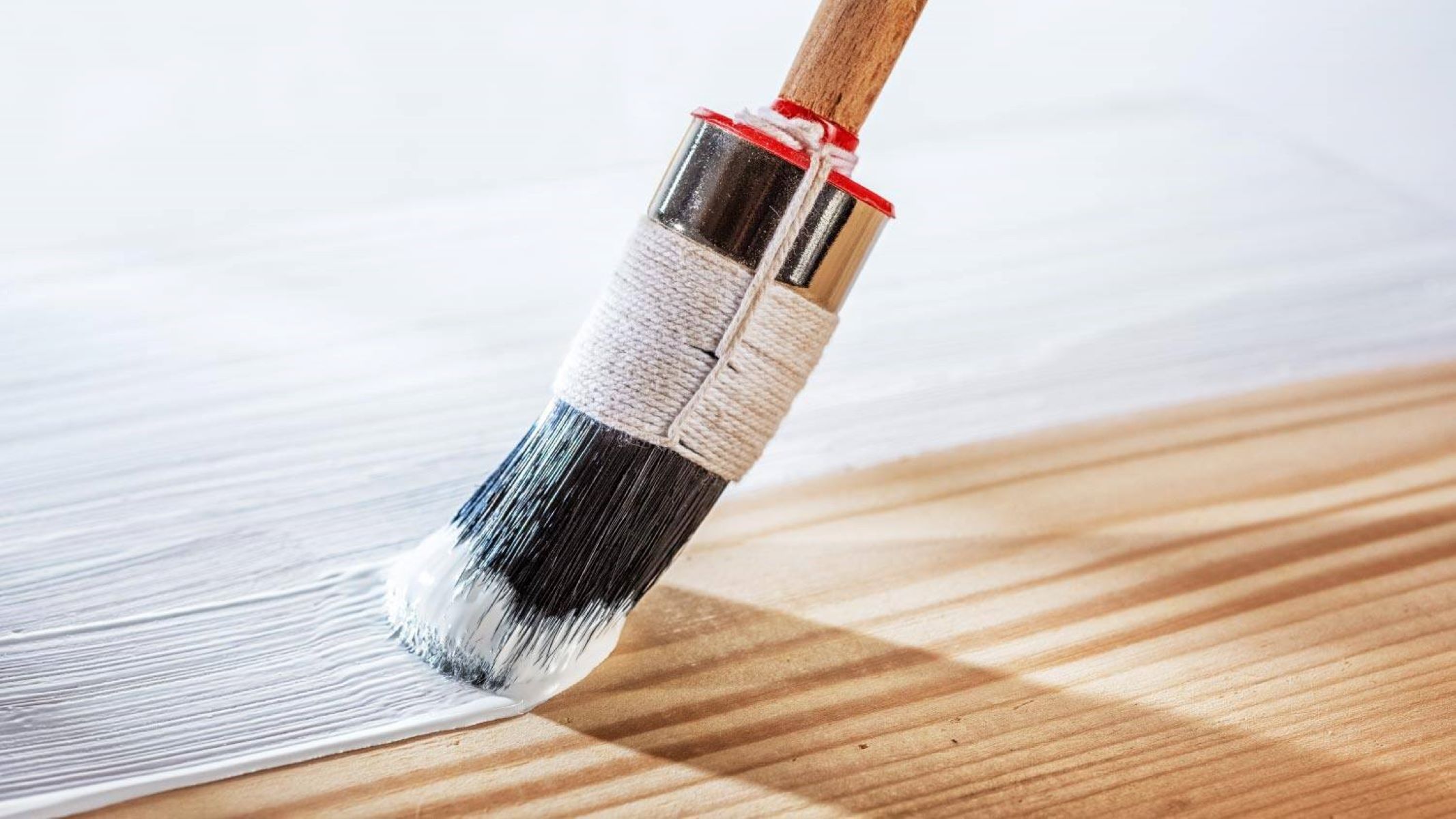



0 thoughts on “What Paint Brushes Did Bob Ross Use”